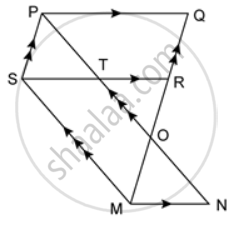Advertisements
Advertisements
Question
In the figure, ABCD is a parallelogram and CP is parallel to DB. Prove that: Area of OBPC = `(3)/(4)"area of ABCD"`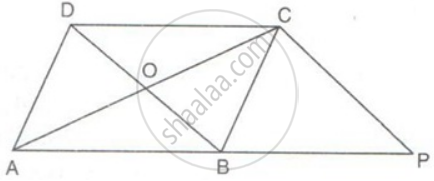
Solution
Since the diagonals of a parallelogram divide it into four triangles of equal area
Therefore, area of ΔAOD = area ΔBOC = area ΔABO = area ΔCDO.
⇒ area ΔBOC = `(1)/(4)`area(||gm ABCD) ..........(i)
In ||gm ABCD, BD is the diagonal
Therefore, area(ΔABD) = area(ΔBCD)
⇒ area (ΔBCD) = `(1)/(2)`area(||gm ABCD) .......(ii)
In ||gm BPCD, BC is the diagonal
Therefore, area(ΔBCD) = area(ΔBPC) .....(iii)
From (iii) and (ii)
⇒ area (ΔBPC) = `(1)/(2)`area(||gm ABCD) .......(iv)
adding (i) and (iv)
area(ΔBPC) + areaΔBOC = `(1)/(2)"area(||gm ABCD)" + (1)/(4)"area(||gm ABCD)"`
Area of OBPC = `(3)/(4)"area of ABCD"`.
APPEARS IN
RELATED QUESTIONS
ABCD is a parallelogram. P and T are points on AB and DC respectively and AP = CT. Prove that PT and BD bisect each other.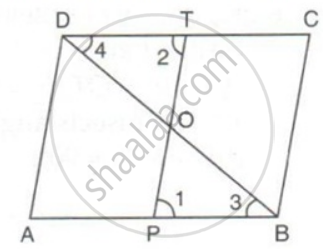
ABCD is a rectangle with ∠ADB = 55°, calculate ∠ABD.
Prove that if the diagonals of a parallelogram are equal then it is a rectangle.
ABCD is a quadrilateral P, Q, R and S are the mid-points of AB, BC, CD and AD. Prove that PQRS is a parallelogram.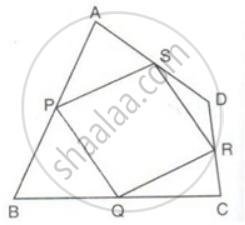
Prove that the line segment joining the mid-points of the diagonals of a trapezium is parallel to each of the parallel sides, and is equal to half the difference of these sides.
In a parallelogram PQRS, M and N are the midpoints of the opposite sides PQ and RS respectively. Prove that
MN bisects QS.
In the given figure, PQRS is a parallelogram in which PA = AB = Prove that: SA ‖ QB and SA = QB.
Prove that the diagonals of a kite intersect each other at right angles.
In the given figure, AB ∥ SQ ∥ DC and AD ∥ PR ∥ BC. If the area of quadrilateral ABCD is 24 square units, find the area of quadrilateral PQRS.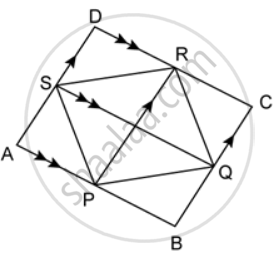
In the given figure, PQ ∥ SR ∥ MN, PS ∥ QM and SM ∥ PN. Prove that: ar. (SMNT) = ar. (PQRS).